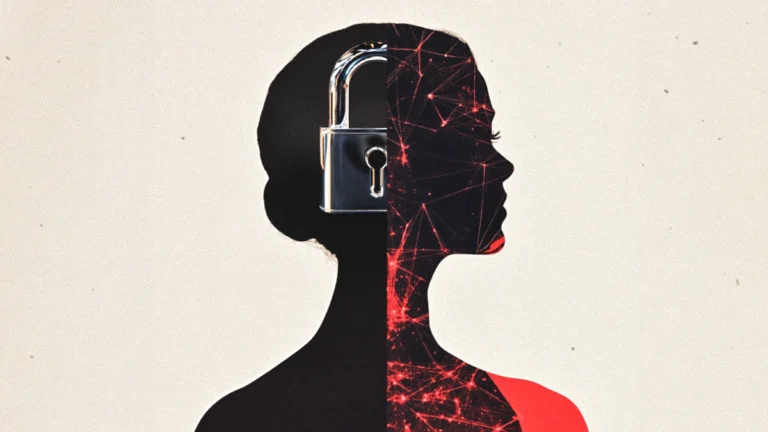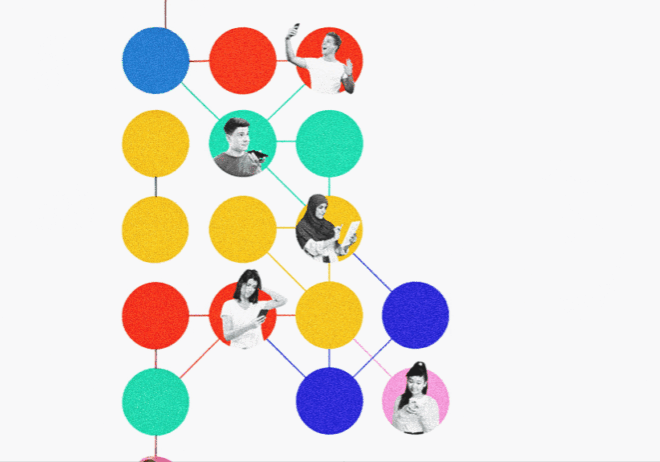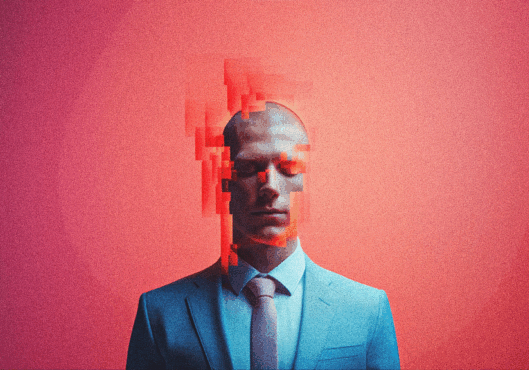
How AI Creative Agency Is Making Marketing Smarter Than Ever
Not too long ago, “creative” and “algorithm” sounded like two people who would NEVER sit together for lunch. One thrives on organic, unexpected inspiration; the other is true to logic and rules. Yet in 2025, all of that has come to a head, and they are literally working together—and the game is about to be changed for all agencies.
AI is no longer just a productivity hack or an experimental alternative. It is a true partner now that is scaling creatively for agencies at breakneck speed and enabling creative agencies to move faster, think bigger, and get sharper insights than ever before. The outcome? Campaigns that feel more personal, get into the right hands, improve timing, and, more importantly, generate results clients can measure.
This isn’t a fad. It’s a new baseline. In this article, we’ll explore how the rise of the AI creative agency is reshaping advertising, amplifying human creativity, and setting a new standard for success.
From Mad Men to machine learning
Traditional agencies have long existed at the intersection of art and commerce. Copywriters chase a perfect headline, designers contemplate and agonize over colors, and strategists map audience segments on oversized whiteboards. However, with the number of marketing channels rapidly increasing and consumer behavior shifting seemingly overnight, even the most seasoned teams were unable to keep pace.
This is where the creative agency that leverages AI comes in: a hybrid of human creativity and machine intelligence. This is not a situation where robots are replacing art directors. Rather, AI enables us to:
- Analyze enormous data sets in seconds.
- Predict what types of visuals or copy will resonate with different audiences.
- Automate repetitive production work so talent can focus on truly high-value thinking.
To use an analogy, imagine having a strategist who can review every ad, tweet, and piece of content from every competitor and develop an actionable plan before you’re even thinking about your first cup of coffee!
Why AI isn’t killing creativity—it’s multiplying it
The early trepidation was that AI would transform agencies into mindless content producers. That will not be the case.
AI is taking on the “busy work” that formerly took up so much time—resizing assets, testing thousands of ad variations, and tagging campaign analytics by hand—and giving creative teams back that time to spend on, well, creating.
For instance:
- Faster brainstorming: AI is capable of providing dozens of basically-generated campaign start ideas in seconds, butting against gut-based directions the human team didn’t think of.
- Better personalization: An AI system will help reduce the pain of generating 500 posts for a social campaign instead of simple one-offs that just get stale.
- Visual experimentation: AI is capable of showing what something might look like on multiple devices or showing a campaign timed out across various locations and seasons before spending the time to write out a single plan.
AI won’t replicate the “big idea.” It will give teams the data and time to make their big idea as big as possible.
The new AI agency toolkit
If you walked into a major AI creative agency today, it would have a different toolbox than it did five years ago. Some of the new staples include:
- Generative AI for concepting: Platforms like Midjourney, DALL·E, or Runway are no longer just for mood boards—they are allowing agencies to quickly visualize many campaign directions before committing resources.
- Predictive analytics for campaign performance: AI tools can utilize historical data to gauge how effective an ad or piece of content will be for a given audience, enabling optimizations of spend before the launch button is even pressed.
- Automated A/B testing: Instead of having to test two ad variations manually, AI can create and analyze dozens of variations and find patterns that humans may miss.
- Natural Language Processing for tone matching: Do you want your copy to feel like a Gen Z TikToker one day, then a luxury brand the next? AI can evaluate, match, and change tone and style guidelines in an instant.
- Automation—AI-Powered creative ops: In today’s rapidly evolving creative project landscape, multiple workflow platforms are relying on AI to route tasks, flag inconsistencies, and scale even compliance—ensuring your project every time is the ‘on brand’ and ‘on time’ projects.
Real-World examples of AI in agencies
Talking about the capability of AI is one thing; seeing AI in action is a different matter altogether. Agencies around the world are already using AI to design campaigns, predict performance, and personalize experiences at levels unimaginable just a few years ago. Here are a few examples.
Coca-Cola’s AI Playground: Coca-Cola has an AI-oriented portal, “Create Real Magic,” launched in 2023, that allows fans and creators connected to the brand to create branded content using company assets. This was a crowd-sourcing experiment but also functioned as a consumer engagement platform, and provided the brand with a trove of creative ideas.
Ogilvy’s AI-Driven Personalization: At Ogilvy, they have been adopting AI tools to embrace hyper-personalization at volume for luxury brands, especially in markets with rapidly evolving consumer tastes.

Ogilvy
Nike’s Creative Predictions: Nike’s internal team uses AI to make predictions around which visuals, taglines or formats will perform best for the various seasonal pushes so they can react quickly from idea to market.

How clients profit from this
The most noteworthy triumph? Quicker turnaround without sacrificing quality. However, the effects extend well beyond quicker delivery; AI is helping agencies make more intelligent creative choices, improve campaigns in real time, and maximize every ad budget. Working more efficiently isn’t enough to keep brands ahead of the curve; it’s also important to work more precisely and with insights.
- Improved ROI Measurement: AI allows for measurement of creative impact at ever-more-detailed levels – including which word drove the most clicks in a headline.
- Always-On Optimization: Campaigns do not just launch and run; they evolve continuously as AI applies performance data and optimizes components in real-time to improve results.
- Local-Global Balance: AI can help agencies deliver on multiple markets instantly, providing the right amount of global brand consistency with the proper local cultural nuance.
Challenges agencies still face
Going AI-first isn’t always easy, of course. Speed, scale, and accuracy are all benefits of the technology, but it also presents new difficulties, including issues with data quality and challenging moral and artistic conundrums. Agencies must overcome these challenges with the same skill they use while making advertisements if they want to become proficient in AI.
- Data Quality: AI is only as good as the data it learns from. If the dataset is flawed in some way or also contains problematic or incomplete datasets, it will impart those flaws onto the outputs.
- Creative Originality: AI does remix existing ideas brilliantly. However, it falls on a human to challenge the norms, avoid “sameness,” and find new boundaries to explore in their campaigns.
- Client Education: Not every client understands AI’s capabilities—or its limitations. Agencies need to be honest about what AI can do as distinct from what AI cannot do.
- Ethics and IP: Who owns creatively that has been generated by AI? The agency? The client? The AI platform? Even today there are still no universally agreed accepted answers available to us.
The human factor
Here’s the truth: the most successful AI creative agency isn’t necessarily the one with the flashiest tech; it’s the one that uses AI to enable the human talent to shine through. Good taste is still necessary for a great art director. Empathy for the audience is still necessary for a great strategist. The ability to make someone laugh, weep, or click is still a must for a great copywriter.
The difference today is that they have an AI partner that can execute faster than a human, never sleeps, and isn’t traumatized from doing 100 iterations to find the solution.
What’s next for AI-powered agencies?
The next stage is full integration, if the previous few years were about experimenting with AI. AI is influencing strategy, generating concepts, and propelling ads from pitch to performance in an era where creative firms are transitioning from trial runs to. In the upcoming years, you can anticipate:
- AI-First Pitches: Before the project is even approved, agencies present mock-ups, audience simulations, and ROI estimates to clients.
- AI tools that join brainstorming sessions are called creative co-pilots. They provide real-time ideas and data as concepts evolve.
- Emotionally Intelligent AI: These future systems use biometric data, sentiment analysis, or facial recognition. They assess emotional responses instantly and make creative adjustments.
- AI that combines ad buying, creative production, customer care, and analytics in one cycle is called an integrated campaign ecosystem.
Cut to the chase
AI in creative firms is meant to enhance human creativity, not to replace it. The most astute agencies are redefining what is feasible. They’re using AI as a launchpad, not a shortcut. The result? Ads that are faster, sharper, and more human—in a world where attention is priceless. Explore how AI can supercharge your next big idea now, before your competitors do.


